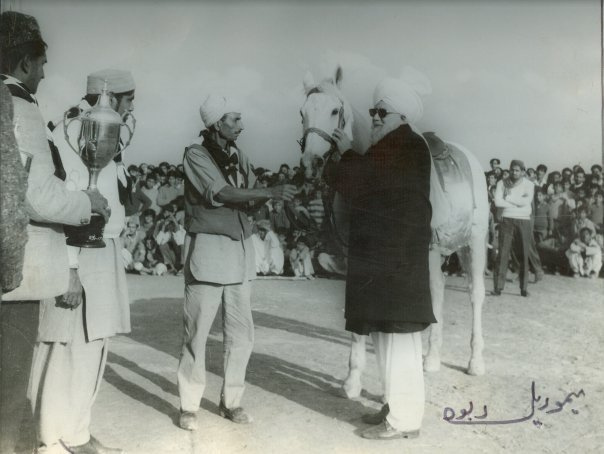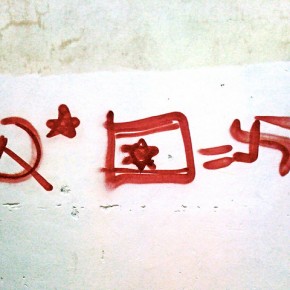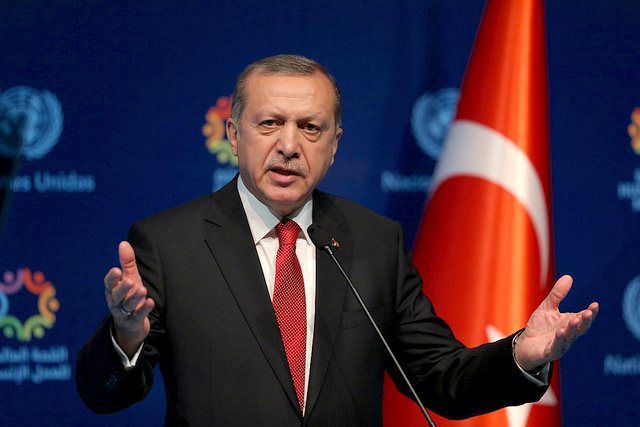I grew up hating Ahmaddiya Muslims. It’s almost a ritual for Pakistani Muslims, especially in the deeply pious newly middle class. Even calling them Muslims will bother many of my family members: we all grew up using the pejorative “Qadiani.” We hated them with a vehemence that somehow rivaled our disgust for Sikhs and Hindus, though maybe it’s all part of the same thing.
Since the formation of Pakistan, Ahmaddiya have frequently been antagonized as enemies to the country’s avowedly Islamic identity. The Pakistani parliament passed a law declaring them to be non-Muslims in 1974, and they were explicitly discriminated against in General Zia ul-Haq‘s Ordinance XX, which forbade a number of allegedly “un-Islamic” activities in the country. Their discrimination has been widely celebrated among many right-wing Muslims, who are taught to regard Ahmadiyya in contempt.
This is why I find it so essential to explore the role that Ahmadiyya Muslims would play in Liberation Islam. I suppose it would be easier to explore various other minority groups and their relationship to this philosophy. I could simply argue that tawheed implies the onenness of humanity, along with the oneness of Allah. This universalism is perfectly compatible with modern liberalism, and arguably, is its source in the first place.
Thus, all that needs to happen is that it gets remixed. Any earthly division, such as race, sect, gender, and class, can be said to be irrelevant within the bigger picture. Many Muslims already use this logic to argue against the Sunni-Shi’a divide. It’s too simple, though. Liberals find it very easy to argue that “everyone should get along” when they’re discussing groups whose tolerance is politically correct. It’s considerably more difficult to apply those themes to groups that are widely held in contempt.
It’s the responsibility of left-wing Pakistanis to do this, though. Ahmadiyya Muslims hold a truly unenviable social position in Pakistan. The religious opposition to their existence is so intense, and has had so much state backing, that arguing for their freedom from it often seems hopeless. This is exactly why many Ahmaddiya have fled to the West (they were among the first South Asian Muslim emigrants,) or rely on military-backed secularists, to ensure their survival.
Minority groups in the Muslim world frequently have to deal with this dichotomy. Either you face discrimination and possibly death with the Islamists, or find relative safety with the non-Islamists, who only protect you if you effectively “blend in” through coercive integration. In the mean time, societies are deprived of their diversity. Ultimately, no one wins. Clearly, there needs to be a new way forward, so that minority groups such as the Ahmadiyya aren’t living sources of tension.
The Ahmaddiyah aren’t just another minority group though. If we are to understand the role that Ahmadiyyah play in Pakistani society, we have to seperate “Ahmadiyya” the group from “The Ahmadiyya” as a concept. It is a societal construct that serves a purpose of venting wider anger. They also provide for a convenient homegrown Other against which the Pakistani ‘ummah can be defined.
Part of the reason this works is because the Islamist rhetoric seems iron-clad. Ahmadiyya Muslims are said to be apostates because they do not recognize the Prophet Muhammad as the “seal of all prophets.” The Prophet’s message is said to have clarified those of Christianity and Judaism, which allegedly became distorted, in a final unalterable form. He wasn’t just “the Messenger of Allah.” He was the last Messenger of Allah.
The Ahmadiyya movement arose in the late 19th century and maintained that the spiritual leader Mirza Ghulam Ahmed was a prophesied divine reformer that would bring about the end times and Islam’s triumph as the Mahdi. It was immediately rebuked for implying that Ahmed could be a successor to the Prophet Muhammad. The religious justification is that Ahmadiyya need to be purged from the community because they have deviated. The irony is that the far-right Islamists who are most passionate about this tend to have a great deal in common with Ahmaddiya Muslims.
The movement started when it did because Muslims all over the world had tremendous uncertainty about the future of the Muslim community (ummah) due mainly to British imperialism, and the advent of the Industrial Revolution. Frequent readers will note that pan-Arabism, Arab republicanism, and modern Salafism all began during this period. Ahmed used a lot of rhetoric that is superficially very Salafist.
His teachings seek to restore Islam to its “true essence,” which many Salafis argue was embodied in the Rashidun Caliphate. The only difference is that it makes the step of defining the agent of this revival and purification to be Ahmed himself, rather than something more abstract like an overall discipline based in literal readings of the sunnah and hadith.
These religious underpinnings are crucial for hatred of The Ahmaddiya. It isn’t just because they are passionate disagreements about important tenants of Islam. These are actually the easiest to navigate. For instance, the idea of Ahmed being a Prophet isn’t so much blasphemy as it is a manifestation of a major contradiction in Islamic eschatology about what the Mahdi is in the first place. Is the Mahdi a messiah, like Jesus? Is the Mahdi a divinely-chosen leader that isn’t a Prophet? Is the Mahdi a Prophet? It is very unclear. As a result, there is no reason why Ahmed couldn’t be argued to be this figure.
The religious disgust is necessary because they frame a feeling of superiority that can only be destroyed if someone lets go of an entire worldview. We have to remember that fundamentalism requires “lesser” belief systems to legitimize itself. If Pakistan was to completely accept Ahmaddiya Muslims, then there would be very little distinction between them and Sunni nationalists. The latter may even cease to exist.

There is also the problem that The Ahmaddiya couldn’t serve its social purpose. The Ahmaddiya is different. It is a representation of whatever led to the Muslim world being so weak that imperialism could occur. The reason that anti-Ahmaddiya sentiment is so strong in Pakistan is because the country’s violent history means that these questions are always on the psychological forefront.
Discrimination is practically compulsive. The Ahmadiyya is seen as the embodiment of the religious perversion that Salafi Muslims seek to cleanse and eradicate. It was perversion of the original revelation that caused the ‘ummah’s weakness, after all. Destroying the perversions will mean that the original revelation can shine through, causing a wider renaissance. This seems even more true when Ahmadiyya Muslims are rhetorically linked to British conspiracies to undermine colonial India, as I have heard argued before.
The ritualistic violence also exorcises repressed urges. The idea of Ahmaddiya Muslims not being Muslims is crucial to this. In the fundamentalist mindset, if they are kafirs, then they are basically fair game. The result is a cleansing ritual that is deeply cathartic, with The Ahmaddiya as one of its enemies.
There is a nihilism here that Liberation Islam cannot avoid. Islamism has become predatory because much of the ‘ummah has responded to the horrors of imperialism by attempting to purify itself. While mobilizing against far-right Islamists who pursue these objectives, we must understand the alienation that informs it. Even when the discrimination is based more in feelings of superiority than in personally taking place in violence, it is still there. It is just a bit hidden.
We cannot crush hatred of The Ahmaddiyah outright. It serves an abstract purpose that is tied to structural realities. Those structures have to change in order to destroy the need for The Ahmadiyya in the first place. People wouldn’t need to lash out at representations of their own powerlessness if they didn’t feel powerless.
That isn’t the type of thing that happens overnight. It requires a fundamental overhaul of social relations. However, that was always one of the main purposes of Islam in the first place: to unify dispirate peoples together under the idea of tawheed. If we cannot apply the concept to society’s most vulnerable elements, like Pakistan’s Ahmaddiya Muslims, then we cannot apply it to ourselves, either.
Photographs courtesy of Rabwah, look_west, and junaidrao. Published under a Creative Commons License.






